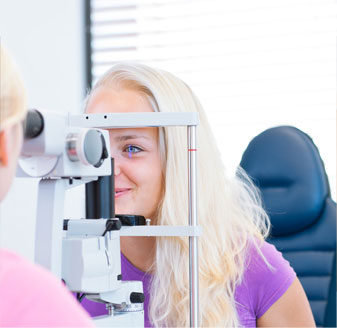 According to the American Academy of Ophthalmology, around 32% of ophthalmology practices are actively using electronic health records or EHRs. An electronic record system provides ophthalmologists effective opportunities to maximize their collaboration with primary care providers or specialists. With EHR, ophthalmologists can better contribute to care coordination, chronic disease management and improved quality of care. Let’s take a closer look at raising EHR productivity in an ophthalmology practice and how ophthalmology medical transcription is still relevant.
According to the American Academy of Ophthalmology, around 32% of ophthalmology practices are actively using electronic health records or EHRs. An electronic record system provides ophthalmologists effective opportunities to maximize their collaboration with primary care providers or specialists. With EHR, ophthalmologists can better contribute to care coordination, chronic disease management and improved quality of care. Let’s take a closer look at raising EHR productivity in an ophthalmology practice and how ophthalmology medical transcription is still relevant.
A study published in the Journal of the American Academy of Ophthalmology found that an ophthalmology clinic in North Carolina gained an internal return on investment of 41% from their EHR over 5 years. As per the study, the main factors that contributed to this productivity gains were positive cash flow savings on administrative staff, greater optical revenues and an increase in physician productivity during the fifth year. The physician productivity dropped a bit when the electronic health record was introduced while the average productivity of the clinic remained constant for three years. Some of the physicians slightly expanded their schedules in the fifth year to increase their productivity and more patients were seen in the clinic each day.
The study further explains that medical scribes have an important role in maintaining productivity with EHRs. Their role is crucial in documenting and e-prescribing and helping physicians to spend quality time with their patients without facing the computer for the entire exam.
Using Scribes in Ophthalmology
As per the Joint Commission, a medical scribe is defined as an unlicensed individual who is hired to enter healthcare details into the EHR or the medical chart upon the direction of a physician or licensed independent practitioner. In other words, we can say scribes share the physicians’ task of data gathering and EHR documentation. When it comes to ophthalmology, scribes enter all information into the EHR which can’t be entered automatically through ophthalmic instrumentation or EHR interfaces. They also enter the examination information and exam findings into the electronic records so that ophthalmologists can maintain verbal, eye and body position contact with the patient better. However, there are some challenges in employing a scribe such as:
- Finding the right person is a major challenge. The candidate must be computer savvy. He/she should be familiar with ophthalmic terms and have the ability to transcribe the physician’s spoken words. Apart from being able to think quickly, the scribe should be able to understand the basic workflow of the examination, assessment plan and documentation.
- You may need to provide appropriate training to selected candidates. This may not be affordable for smaller practices.
For all these reasons, a combination of EHR and transcription becomes the practical option. In this approach, the doctors’ recordings are transcribed, checked thoroughly and populated into appropriate fields within the electronic record system by a transcription service provider. This helps physicians save the valuable time spent directing the scribes or facing the computer screen. Professional medical transcription companies offer the service of skilled and experienced transcriptionists. Three-level quality checking is performed with experienced proofreaders and editors to ensure maximum accuracy.


